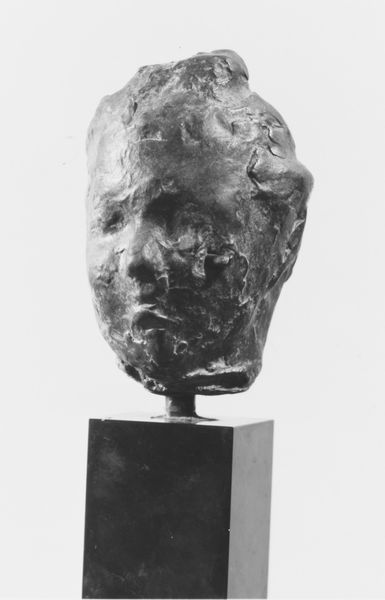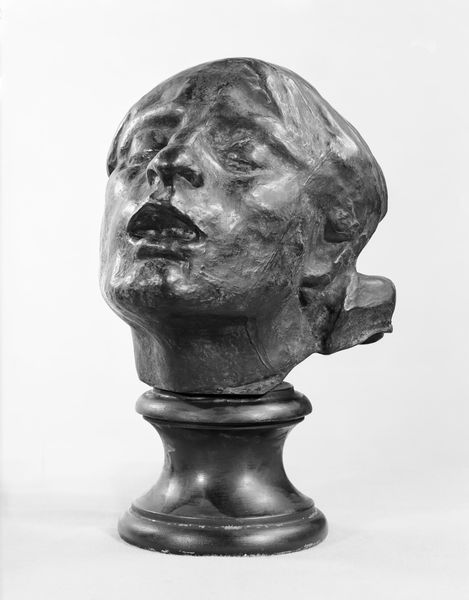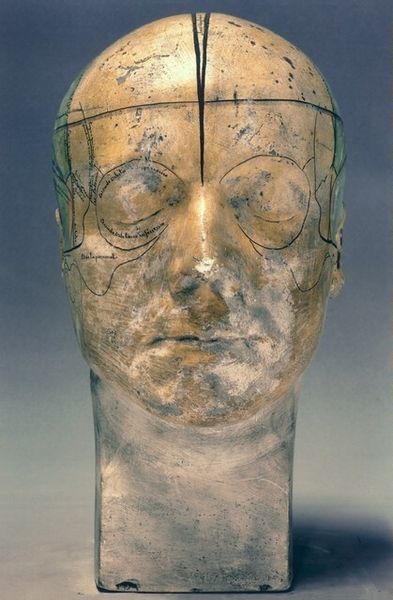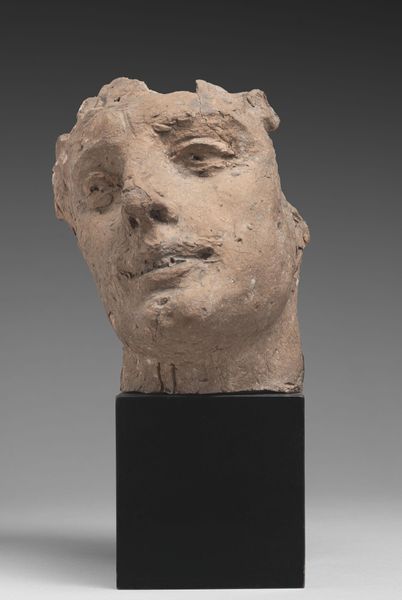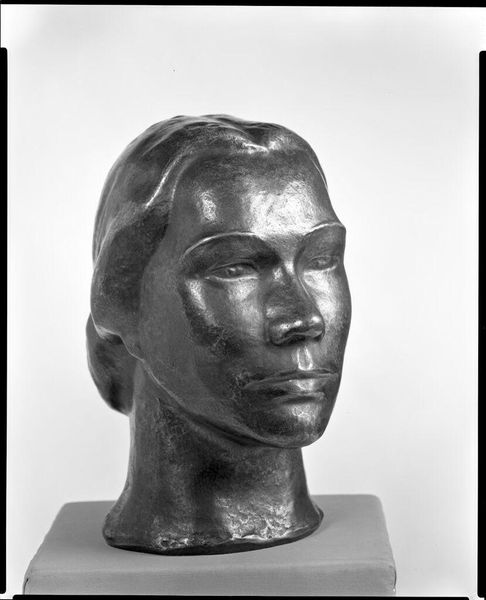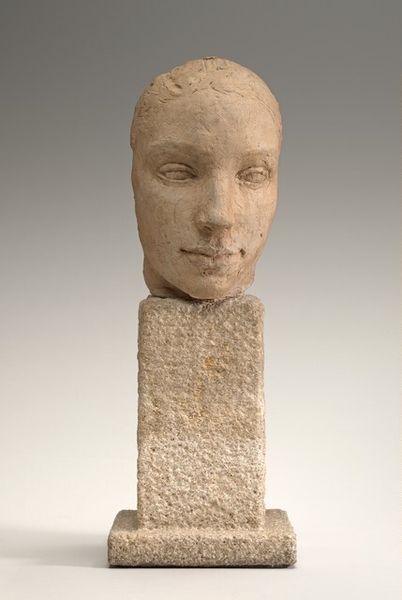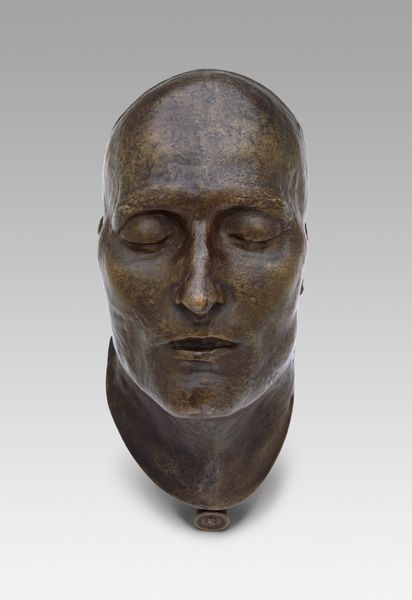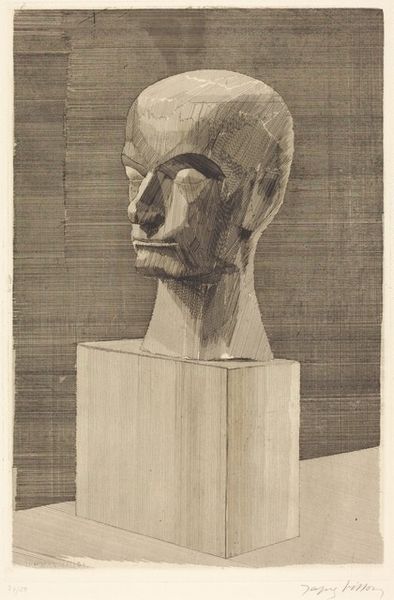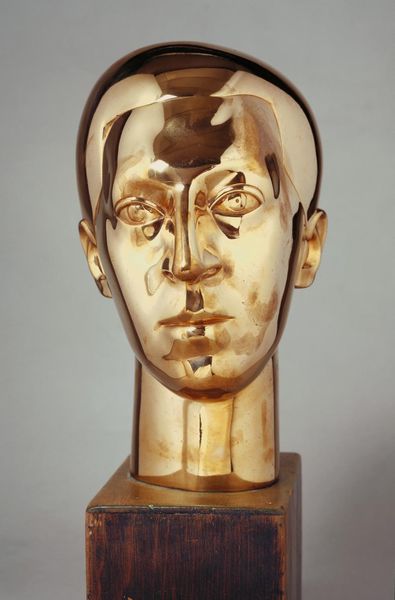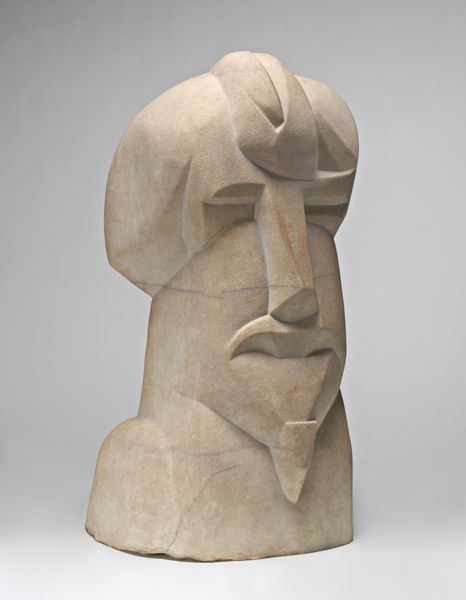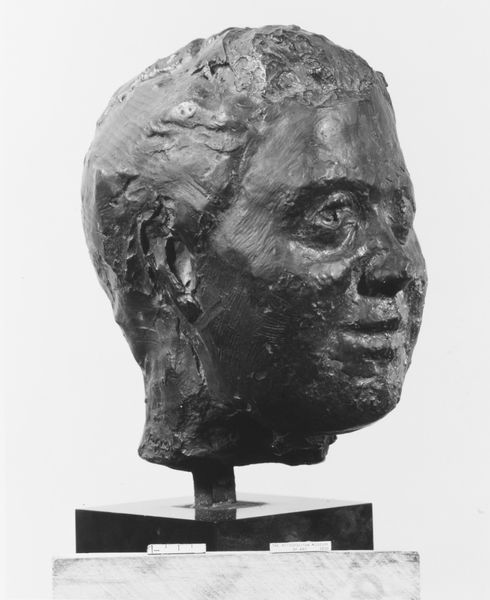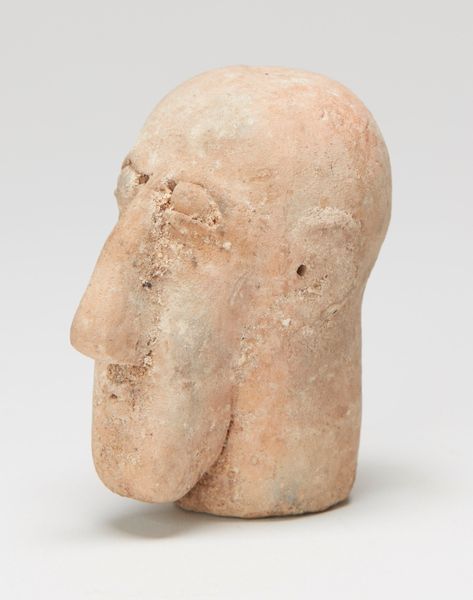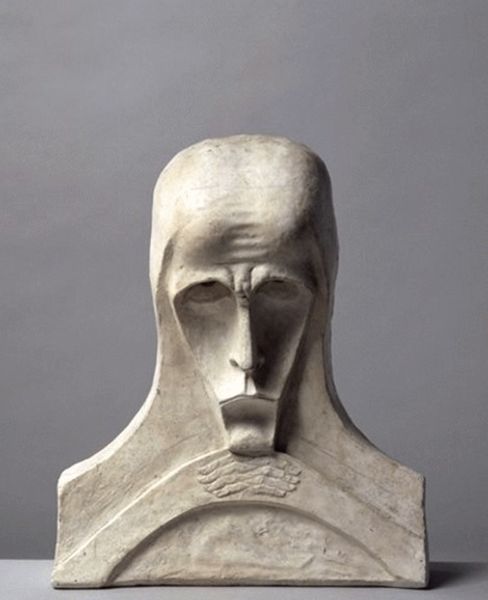
carving, photography, sculpture
#
portrait
#
cubism
#
carving
#
photography
#
geometric
#
sculpture
#
abstraction
Copyright: Public domain US
Editor: Here we have Archipenko’s "Mask," carved around 1911. The stark geometry against the smoothness of the material is what gets me. It’s quite striking, almost severe. What are your thoughts? Curator: I think "severe" is a perfect word. Look at how Archipenko uses the visual language of Cubism – geometric forms, simplification, and a breaking down of traditional representation – not just to depict a face, but to interrogate the very *idea* of a portrait. How was this initially received do you think? Editor: I’d guess that the public found it…challenging? It’s definitely not your standard portrait bust. Curator: Exactly! Consider the context. In the early 20th century, sculpture was often commemorative, tied to specific patrons and public display. This work completely subverts that. By presenting a simplified, almost mask-like face, Archipenko disrupts the viewer’s expectations. This moves away from mere physical resemblance and suggests we see something much more fundamental. Editor: A commentary, maybe? Curator: Precisely. How this work challenged the conventional social and political uses of portraiture is a major aspect. He’s questioning what a portrait is *for.* Who gets remembered, and how? The very act of presenting this abstract, deconstructed form as a "mask" raises all sorts of questions about identity and representation in society. What’s *really* being shown when we view a traditional portrait? Editor: I hadn't thought about it like that, about how it fits into society at the time. Curator: Well, hopefully you'll never look at a portrait the same way again! Editor: Definitely given me food for thought! Thanks for sharing.
Comments
No comments
Be the first to comment and join the conversation on the ultimate creative platform.
